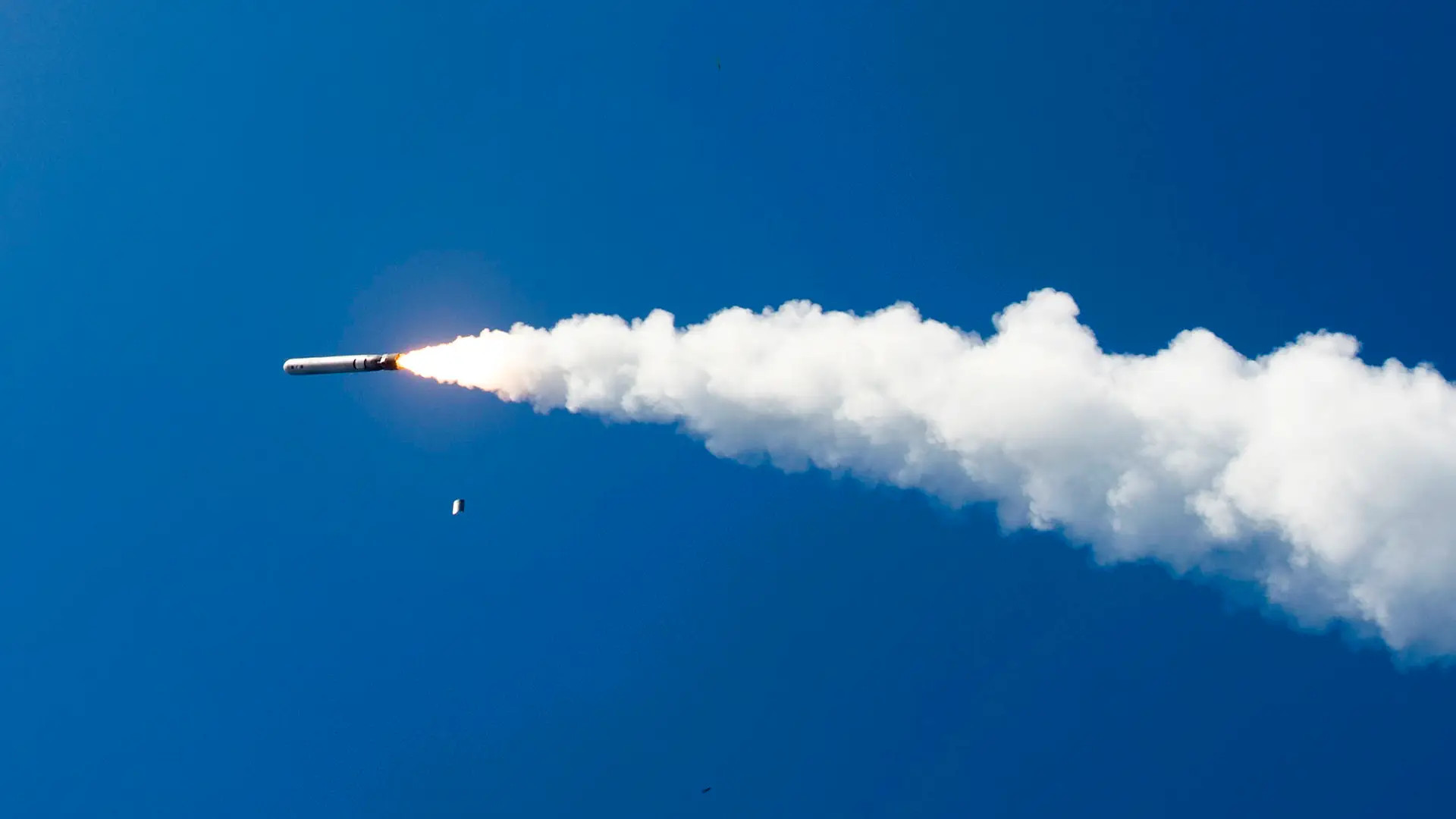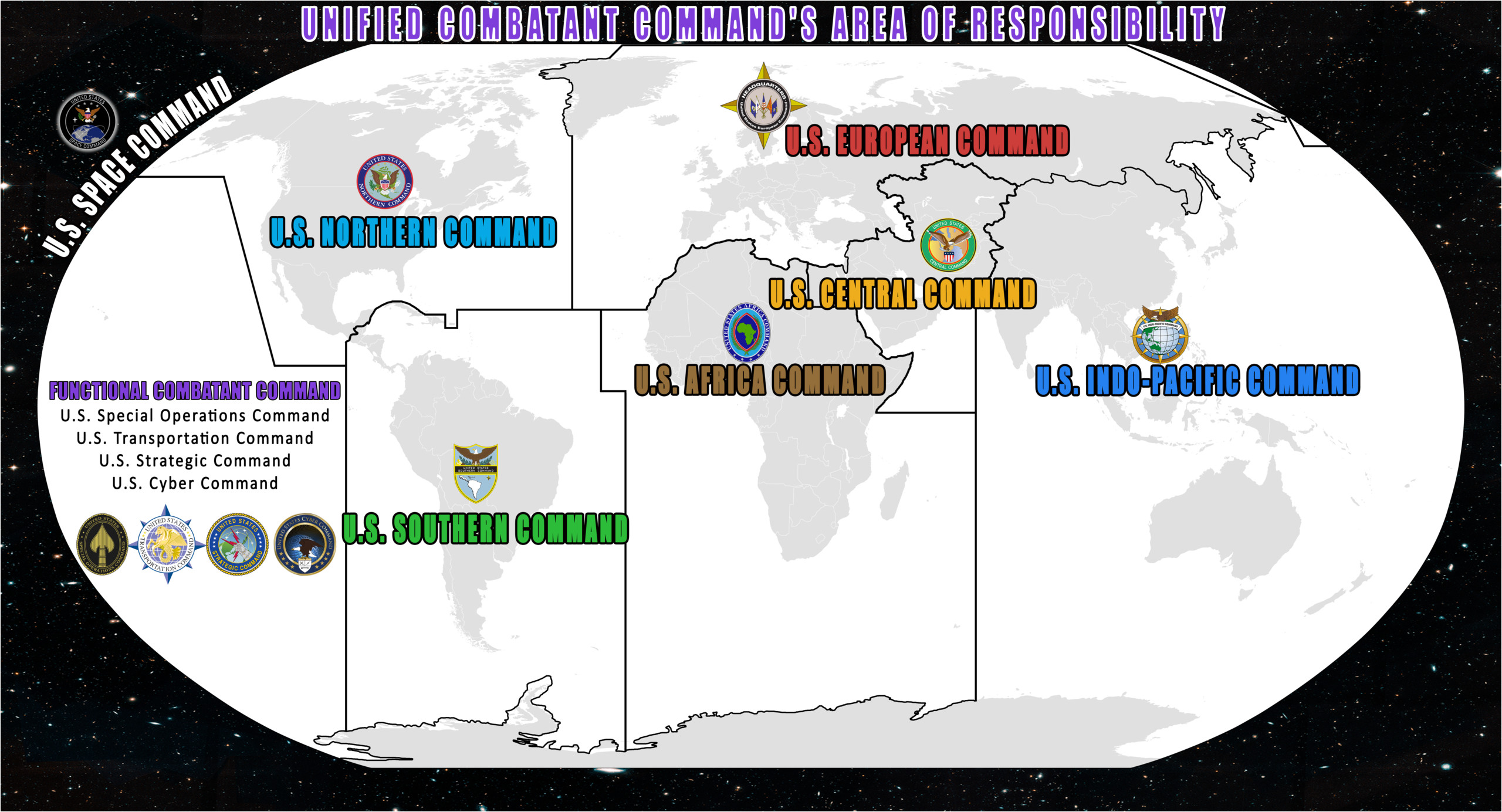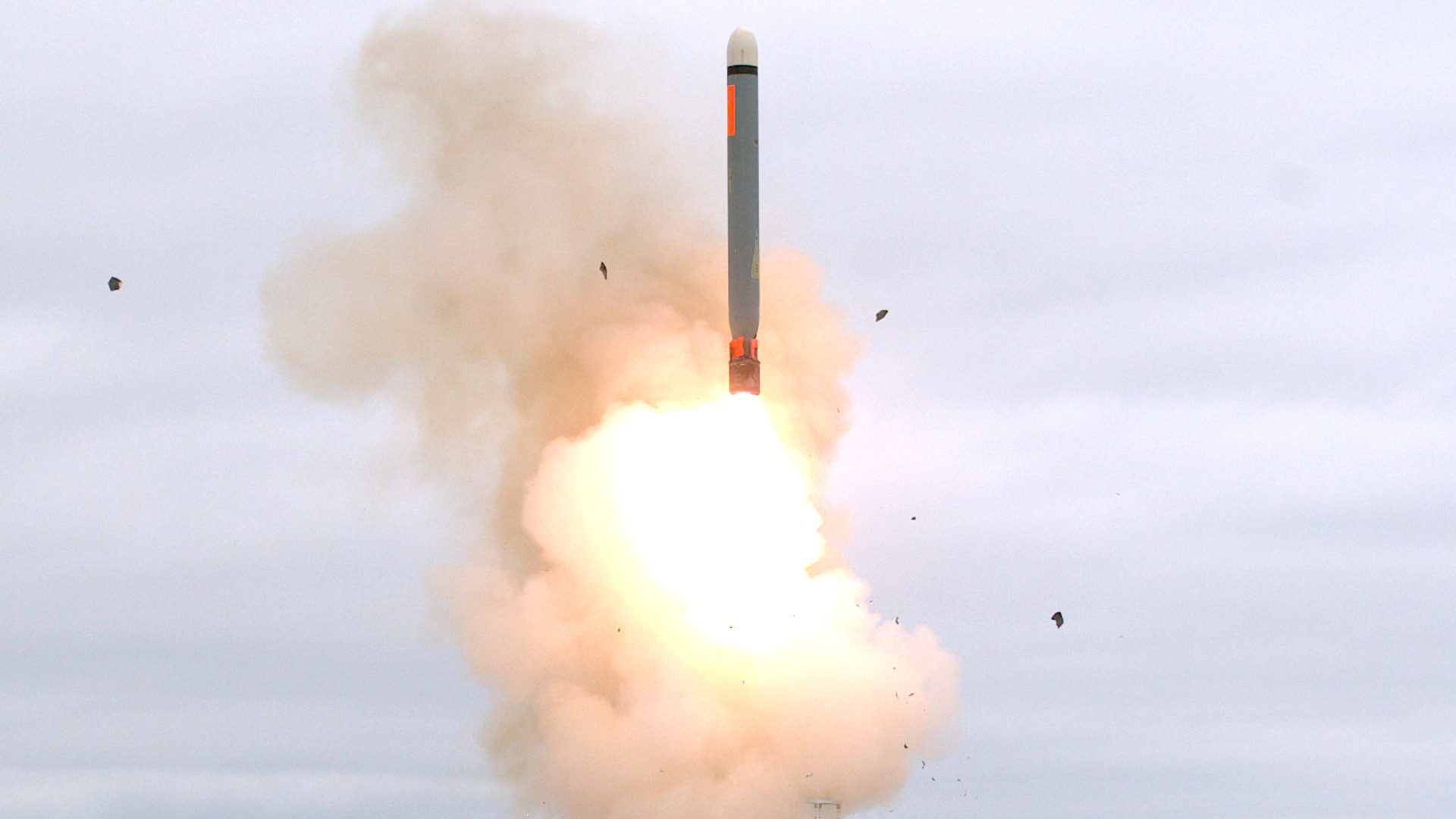The U.S. Marine Corps has formally activated its first unit that will be equipped with ground-launched Tomahawk cruise missiles. The Marines are currently in the process of determining exactly how this unit will be equipped and employed, but the service expects to have a fully operational Tomahawk-armed battalion before the end of the decade.
Cathy Close, a spokesperson for the Marine Corps’ Combat Development and Integration (CD&I) Command, confirmed that this unit stood up earlier this year and provided additional details about it to The War Zone. The initial Long Range Missile (LMSL) battery is officially designated as Battery A, 11th Marine Regiment, and is currently based at Camp Pendleton in California.

Currently, “the first LMSL battery… is working to refine tactics, techniques, and procedures associated with the employment of this unique capability,” according to Close. “We expect the [LMSL] battalion to reach full operational capability no later than fiscal year 2030.”
Close also explained that the LMSL battalion will have three LMSL batteries, in total. Each of those batteries will have an unspecified number of launchers and other systems.
At present, the Marine Corps expects the LMSL battery’s main weapon system to be a version of the same uncrewed 4×4 vehicle the service is also acquiring as a launch platform for the Naval Strike Missile (NSM). This vehicle, called the Remotely Operated Ground Unit Expeditionary-Fires (ROGUE-Fires), is derived from the Joint Light Tactical Vehicle (JLTV).

Pairing ROGUE-Fires with Tomahawk could present challenges just due to the size of the missile. The overall length of a Tomahawk, including the rocket booster that helps launch it, is roughly 20 feet. The NSM with its booster is 13 feet long and already appears to present a significant burden for the ROGUE-Fires vehicle.
“The proof-of-concept [Tomahawk] system would mount the missile launcher on a Joint Light Tactical Vehicle chassis, a setup that already had a tip-over incident due to the center of gravity being off,” Defense News reported earlier this week.
The Marine Corps, “in cooperation with the Strategic Capabilities Office and the Navy” has conducted at least one test of ground-launched “Tomahawk Land Attack Missile mounted on a remotely operated mobile launcher,” according to a document the service released in May 2022.
The Marine Corps has been actively working toward establishing a ground-based Tomahawk capability since 2020. In addition to the Navy and the Strategic Capabilities Office (SCO), an office within the Office of the Secretary of Defense, it has been cooperating with U.S. Army in this pursuit.
The Army is acquiring significantly larger trailer-mounted launch systems called Typhon, derived from the naval Mk 41 Vertical Launch System (VLS), for this purpose, which will also be able to fire other missiles like the SM-6.

The Navy also demonstrated a tractor-trailer-based system using a containerized Mk 41-based setup called the Mk 70 Mod 1 Expeditionary Launcher, or a further variant thereof, in Europe last year. That test focused on the system’s ability to fire SM-6 missiles, but it could conceivably be configured to launch Tomahawks, as well.

“We are not aware of any Marines that were directly involved with the truck-mounted system demonstrated in Europe, [but] we are familiar with that weapon system,” Close, the spokesman for CD&I, told The War Zone. We “have worked very closely with the Navy and the Army in the development of the LMSL capability, and all three Services share common fire control, missile launcher canisters, and missiles.”
Lockheed Martin, which makes the Mk 41 VLS and is the company behind Typhon and the Mk 70 Mod 1, has said in the past the Army system, at least, makes use of a fire control architecture based on its Virtualized Aegis Weapon System. Virtualized Aegis is a modular and scalable version of the famous Aegis Combat System used on Navy Ticonderoga class cruisers and Arleigh Burke class destroyers, among other warships. You can read more about Aegis and its “virtualized” derivative in this past War Zone feature.
Pairing a version of Aegis with the launcher in Marine LMSL batteries would make good sense as it would provide a well-established fire control system that is already designed to tap into various off-board sources of targeting information these units would rely on. On top of that, all the branches of the U.S. military are presently engaged in projects to further expand their networking capabilities, including to help improve the sharing of targeting data, under the umbrella of the Joint All-Domain Command and Control (JADC2) initiative.

Exactly how LMSL units will slot into the Marine Corps’ overall future long-range strike ecosystem is of course among the questions personnel assigned to Battery A, 11th Marines, are undoubtedly looking to answer now. We do know that the service is currently planning for the initial LMSL battalion to be utilized at a very high echelon of command and primarily against strategic-level targets.
“An LMSL battery will provide Joint or Naval Task Forces with long-range cruise missile fires from mobile and dispersed units and will be deployed in response to national tasking as strategic fires in support of Geographic Combatant Commanders or their designated subordinate headquarters,” spokesperson Cathy Close explained.
In U.S. military parlance, Geographic Combatant Command refers to the seven headquarters entities responsible for overseeing operations around the world, as well as in space.

It is worth noting here that Marine Tomahawk units have long been expected to be armed with Maritime Strike Tomahawk (MST) variants, which are optimized for use against enemy ships, including ones that are moving. Of course, MSTs can still be used against targets on land and any Marine launchers capable of firing them would also be able to employ the latest generation of dedicated land-attack versions.
That being said, a strategic-level anti-ship capability could be focused on conducting very long-range strikes against major enemy surface action groups, including carrier strike groups, during a future high-end conflict. The ability to readily neutralize enemy carriers is not something the U.S. military, as a whole, has really had to worry about since the end of World War Two. However, China’s People’s Liberation Army Navy (PLAN) is steadily expanding the size and scope of its own carrier fleets, which could easily be a factor in any future high-end conflict between the two countries.
More broadly, Marine LMSL units, coupled with expanding sensor network, would give regional commanders an additional tool to hold a wide variety of targets at sea and on land at risk anywhere within a bubble extending out 1,000 miles or more in all directions from wherever the launchers might be deployed. Positioning the launchers in forward areas would only increase that reach. There could also, of course, be limiting factors, including suitable deployment locations. For instance, there has been much discussion in recent years about the potential lack of places for the U.S. military, as a whole, to station long-range missile systems in the Pacific.
The Marine Corps has presented the acquisition of new long-range strike capabilities as central to the service’s major restructuring and modernization plans, known as Force Design 2030. Tomahawk is just one part of the service’s plans in this regard, which will also include ground-launched NSMs and swarms of long-range loitering munitions. It may eventually include other strategic-level weapon systems, like the ground-based OpFires Hypersonic missile.

Whether or not LMSL units specifically will be able to employ other weapons in the future is an open question. “It is possible, with significant additional investment, that the LMSL launchers, fire control, missile handling systems, and crew training could be modified to employ other missile systems,” CD&I spokesperson Cathy Close told The War Zone.
Whatever the case, the activation of Battery A, 11th Marines is yet another tangible step the Corps has taken toward establishing its future ground-based Tomahawk capability.
Contact the author: joe@thedrive.com
